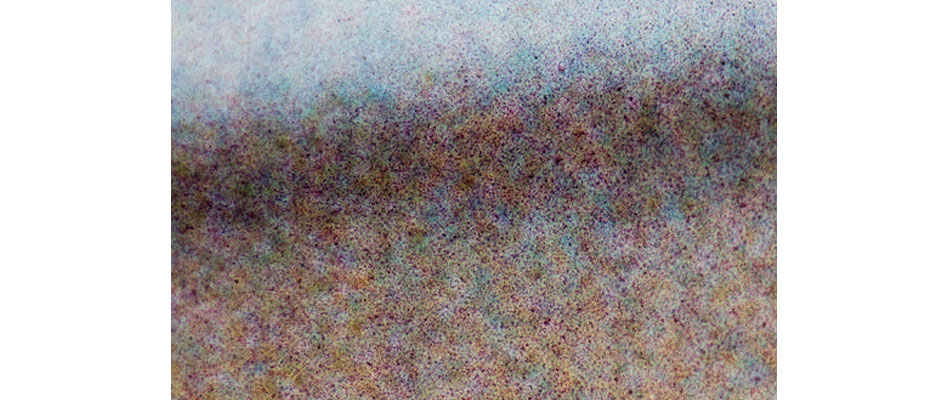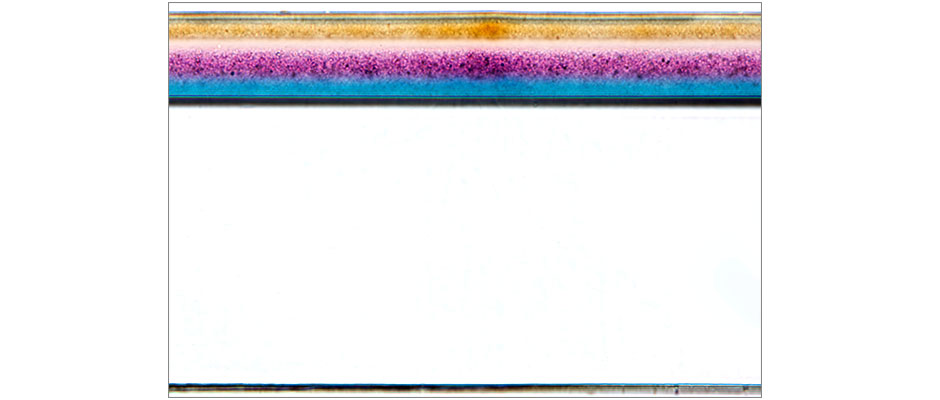


16mm reversal positive on cellulose acetate support.

Dye clouds form the image.

The yellow dye layer is on top, followed by the magenta and cyan layers.
Process DescriptionKodachrome was introduced in 1935 as the first chromogenic color process designed for amateur use. A three color system, Kodachrome reversal film had a multi-layered emulsion, each thin gelatin layer sensitive to blue, green, and red, respectively. The top gelatin layer contained a yellow dye which prevented blue light exposure in the bottom two layers. Processing was complex, originally involving 28 steps in development. Kodachrome differs from many later chromogenic processes because the dye couplers necessary to produce the dye images were incorporated in the developer, rather than in the emulsion. Much beloved by amateur and professional photographers for its aesthetic qualities and dye stability, Kodachrome was discontinued in 2009. |
|